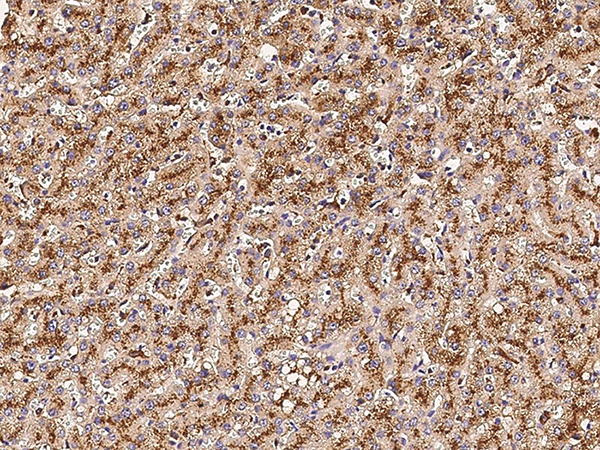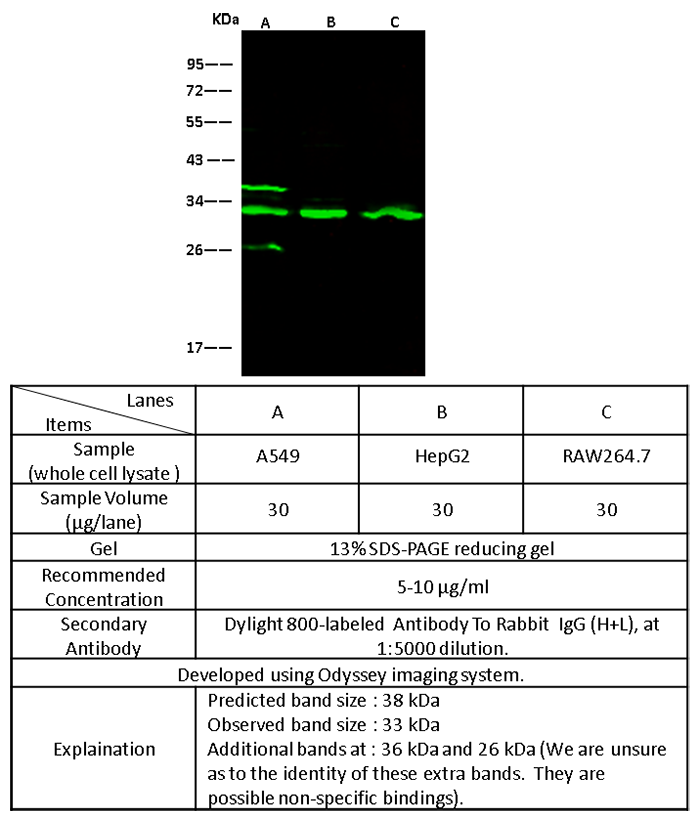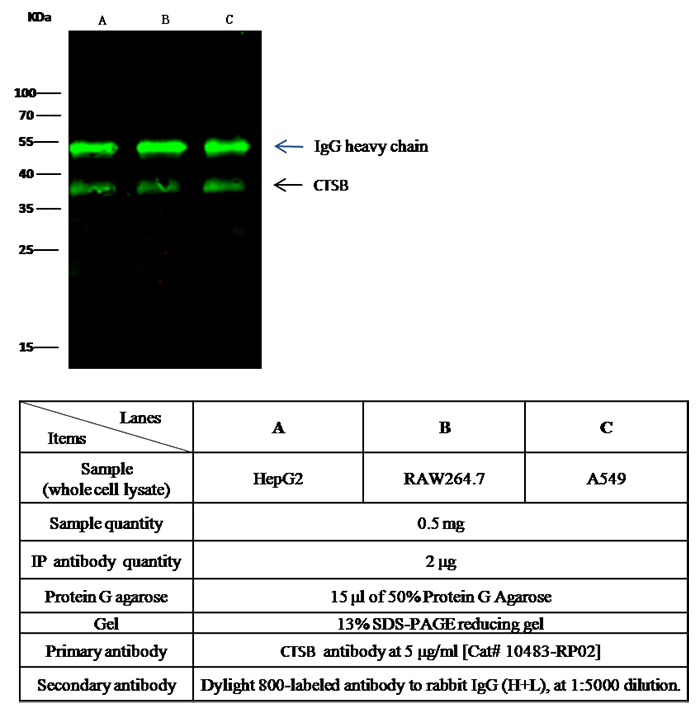-
Product Name
Anti-Cathepsin B/CTSB antibody
- Documents
-
Description
Rabbit polyclonal to Cathepsin B/CTSB
-
Tested applications
WB, IHC, IP
-
Species reactivity
Human Cathepsin B / CTSB
-
Alternative names
CPSB antibody; APPS antibody; Cathepsin B antibody; Cathepsin B antibody; cathepsin B1 antibody; cathepsin B1 antibody; CB antibody; CTSB antibody; Ctsb antibody; CB antibody; APPS antibody; CPSB antibody
- Immunogen
-
Isotype
Rabbit IgG
-
Preparation
Produced in rabbits immunized with purified, recombinant Human Cathepsin B / CTSB (rh Cathepsin B / CTSB; NP_001899.1). Cathepsin B / CTSB specific IgG was purified by Human Cathepsin B / CTSB affinity chromatography.
-
Clonality
Polyclonal
-
Formulation
0.2 μm filtered solution in PBS with 5% trehalose
-
Storage instructions
This antibody can be stored at 2℃-8℃ for one month without detectable loss of activity. Antibody products are stable for twelve months from date of receipt when stored at -20℃ to -80℃. Preservative-Free.
Sodium azide is recommended to avoid contamination (final concentration 0.05%-0.1%). It is toxic to cells and should be disposed of properly. Avoid repeated freeze-thaw cycles. -
Applications
IHC-P: 0.1-2 μg/mL
IP: 1-4 μg/mg of lysate
-
Validations

Cathepsin B Antibody, Rabbit PAb, Antigen Affinity Purified, Immunohistochemistry
Immunochemical staining of human CTSB in human liver with rabbit polyclonal antibody (0.5 µg/mL, formalin-fixed paraffin embedded sections).

Cathepsin B Antibody, Rabbit PAb, Antigen Affinity Purified, Immunohistochemistry
Immunochemical staining of human CTSB in human kidney with rabbit polyclonal antibody (0.5 µg/mL, formalin-fixed paraffin embedded sections).

Cathepsin B Antibody, Rabbit PAb, Antigen Affinity Purified, Western blot

Cathepsin B Antibody, Rabbit PAb, Antigen Affinity Purified, Immunoprecipitation
-
Background
Cathepsin B is a papain-family cysteine protease that is normally located in lysosomes, where it is involved in the turnover of proteins and plays various roles in maintaining the normal metabolism of cells. This protease has been implicated in pathological conditions, e.g., tumor progression and arthritis. In disease conditions, increases in the expression of cathepsin B occur at both the gene and protein levels. Cathepsin B is synthesized as a preproenzyme and the primary pathways for its normal trafficking to the lysosome utilize mannose 6-phosphate receptors (MPRs). Mature cathepsin B has the ability to degrade several extracellular matrix components at both neutral and acidic pH and has been implicated in the progression of several human and rodent tumors progression and arthritis. Cathepsin B expression is increased in many human cancers at the mRNA, protein and activity levels. It is also frequently overexpressed in premalignant lesions, an observation that associates this protease with local invasive stages of cancer. Increased expression of cathepsin B in primary cancers, and especially in preneoplastic lesions, suggests that this enzyme might have pro-apoptotic features. Active cathepsin B is also secreted from tumours, a mechanism likely to be facilitated by lysosomal exocytosis or extracellular processing by surface activators. Cathepsin B is localized to caveolae on the tumour surface, where binding to the annexin II heterotetramer occurs. Thus CTSB is suggested as a tumor marker. Additionally, Cathepsin B can degrade extracellular matrix proteins, such as collagen IV and laminin, and can activate the precursor form of urokinase plasminogen activator (uPA), perhaps thereby initiating an extracellular proteolytic cascade.
-
References
- Mai J, et al. (2000) Cell surface complex of cathepsin B/annexin II tetramer in malignant progression. Biochim Biophys Acta. 1477(1-2): 215-30.
- Podgorski I, et al. (2003) Cathepsin B and its role(s) in cancer progression. Biochem Soc Symp. (70): 263-76.
- Yan S, et al. (2003) Molecular regulation of human cathepsin B: implication in pathologies. Biol Chem. 384(6): 845-54.
- Roshy S, et al. (2003) Pericellular cathepsin B and malignant progression. Cancer Metastasis Rev. 22(2-3): 271-86.
Related Products / Services
Please note: All products are "FOR RESEARCH USE ONLY AND ARE NOT INTENDED FOR DIAGNOSTIC OR THERAPEUTIC USE"
